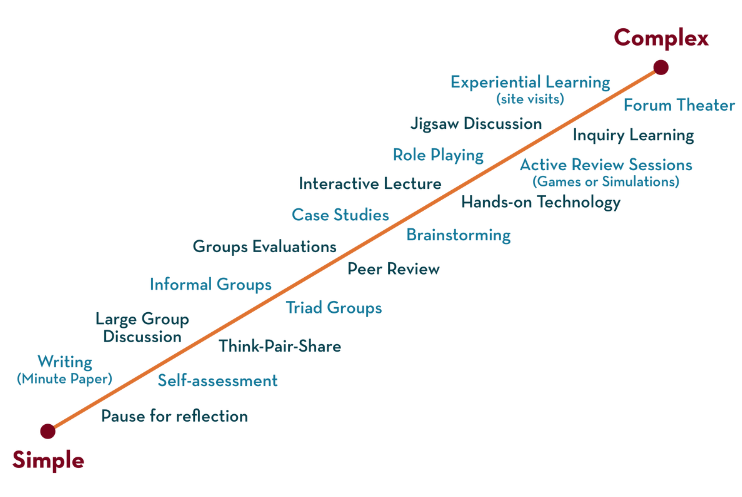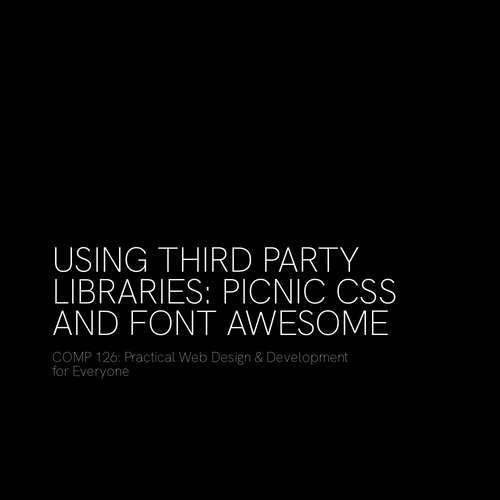ACTIVE LEARNING IN CS
WHY ACTIVE LEARNING?
Diversity
It exposes students to a greater diversity of not only individuals, but ideas & ways of thinking about problems.
1.
Engagement
Studies have shown that students involved in active learning activities learn more while feeling like they are learning less.
2.
Integration
Active learning exercises require students to use a range of skills, not just those covered in this particular classroom.
3.
Good for:
Giving students time to think independently before responding to prompts or answering questions; efficient group activity (i.e., all students can speak without taking a lot of class time)
How to:
Give students at least 30 seconds to think prior to responding to a question or prompt you give them. Then have students turn to a partner and share their responses.
think-pair-share
Good for:
Allowing students to become “experts” in subtopics; giving students opportunities to learn from one another; letting students get up and moving about
How to:
Break students into small groups. Each group is tasked with solving some aspect of one problem or prompt. After working on the assigned matter, each group takes turns explaining their piece of the puzzle. Note: if there is a large whiteboard, each group can have its own space to report their work.
jigsaw
Good for:
Introductions and icebreakers; receiving feedback on new ideas; helping students identify partners or teams for group projects
How to:
Give students prompts to respond to (e.g., “What is your topic?”, “What is your research question?”, etc.). Then divide the class into pairs and have them stand facing one another. In 3 minute rounds, students share their responses and their “date” gives suggestions and/or feedback. One member of each pair will stay in place while the other members circulate down the line until each set of pairs have spoken with one another.
speed dating
Good for:
Brainstorming, collaborative writing prompts, identifying key points from a reading/lecture; defining a key term; midterm/final review
How to:
Have students form small groups. Then give the students a question or problem and have them state their ideas aloud as they write them down, each taking turns. Ideally students will not skip turns, but if one gets stuck, he or she may “pass.”
roundtable
Good for:
Brainstorming, making connections, exploring key concepts
How to:
Design an exercise in which students a concept map of the way a number of key concepts relate to one another. See https://learningcenter.unc.edu/tips-and-tools/using-concept-maps/ for some examples.
concept mapping
Good for:
Establishing mastery of subject matter, illuminating misconceptions
How to:
Design an exercise in which students draw and label from memory a simplified version of something they have been studying (e.g., a process, algorithm, concept, etc.). Ask them to then explain the reasoning behind each part of the diagram to you or another student.
diagramming
Good for:
Exploring new concepts, reviewing key terms, working through problems, case studies, more
How to:
Design a worksheet that will help your students to better understand a critical concept and/or fill in a gap in their knowledge. Your worksheet can ask students to work in groups, pairs, or individuals. It could involve problem solving, case studies, or real-world scenarios with challenges for which students propose solutions or approaches.
worksheets

Now you do it.
With a partner or alone, design an active learning exercise that might be useful in your class.
227-active learning in CS
By tkjn
227-active learning in CS
- 713



